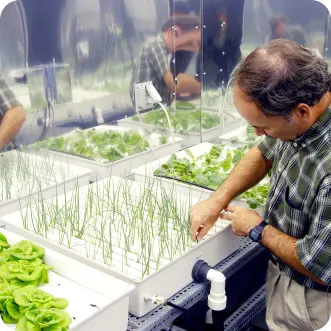Soilless live fodder systems

SOILLESS CULTIVATION
Grain sprouts can be cultivated indoors without the need for soil. The benefits of cultivating fodder for livestock systems are widely acknowledged. A wide range of livestock can be fed using a fodder system in order to provide milk and meat. In comparison to conventional methods, fodder may yield a higher-quality feed at a lower cost, contingent upon the feed costs of hay and grain. The feed that is taken out of the system is highly palatable.
Furthermore, compared to conventional feed options, the nutritional value of sprouted grain might be higher, giving animals a more well-rounded diet. Moreover, year-round production made possible by indoor cultivation guarantees cattle a steady supply of food regardless of seasonal variations.

CEREAL GRAINS AS A LIVE FODDER
Legume and sprouted cereal grains, like barley, can be cultivated in small or large numbers as fodder. Up to tons of sprouts can be grown daily in hydroponic systems, year-round, in a tightly regulated environment. In order to generate fodder feed from seeds, hydroponic systems essentially construct artificial environments by regulating light, water, and temperature.
These technologies make it possible for sprouts to grow effectively and under control, giving animals a reliable supply of nutrient-rich diet. Hydroponic systems can also guarantee a high-quality product and help lower the danger of infection.
Farmers may grow fodder sustainably by using this technology, which also reduces the demand for a lot of land and water. All things considered, hydroponic systems provide a workable way to reliably and efficiently produce high-quality fodder.


